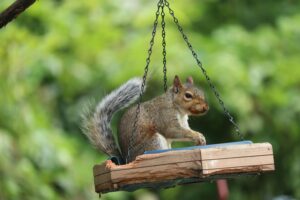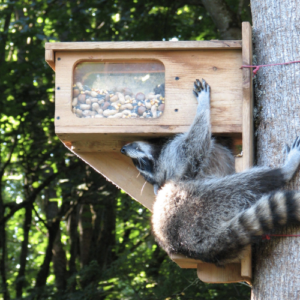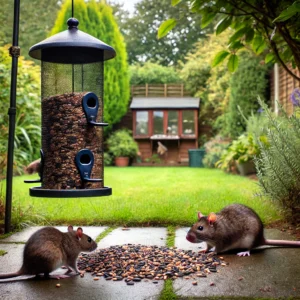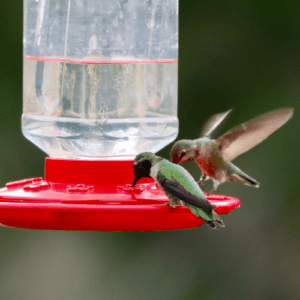Imagine this: You set up a bird feeder, hoping to attract vibrant finches, cheerful chickadees, and perhaps a striking cardinal. Instead, a flock of House Sparrows descends, monopolizing every perch and turning your serene backyard into a bustling sparrow hub. (Quess my first though, yes, it was how to get rid of sparrows?)
This scenario unfolded in my own yard.
Initially, I thought it was a temporary situation. But as weeks passed and native birds were continually outcompeted, I realized action was necessary. I wanted to continue feeding birds without allowing invasive House Sparrows to dominate. Through personal experimentation, extensive research, and insights from fellow bird enthusiasts, I discovered effective, humane strategies how to get rid of sparrows and welcome back a diverse array of feathered visitors.
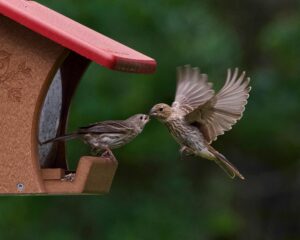
Birding Stats: House Sparrows (Passer domesticus) are among the most widespread bird species globally, with an estimated population of approximately 740 million individuals (CornellLab).
The Right Feeder Can Be a Game-Changer
The kind of feeder you use can either invite sparrows in or gently nudge them away. Sparrows tend to prefer feeders that are open, stable, and easy to access. Once I made a few small changes, the difference was noticeable.
What worked for me:
Short-perch tube feeders: Finches and chickadees had no trouble using them, but sparrows seemed annoyed by the tight spaces.
Weight-sensitive feeders: These close up when heavier birds land. Watching sparrows try—and fail—to use them was a small daily win.
Upside-down suet feeders: Birds like nuthatches and woodpeckers love them. Sparrows? Not built for it.
From the community: An enclosing feeders in cages is a game-changer how to get rid of house sparrows. Only smaller birds could squeeze through the instant sparrow filter.
The Seed Switch: Choose What They Don’t Want
I used to grab generic mixed seed bags thinking, “Birds are birds. They’ll all eat this.” Turns out, sparrows are the ultimate opportunists—they’ll eat anything that doesn’t make them work too hard.
Once I started offering seeds that weren’t on their favorites list, the flock thinned out.
Here’s what I switched to:
Safflower: Loved by cardinals, ignored by sparrows.
Nyjer (thistle): Goldfinches go wild for it. Sparrows? Not impressed.
Black oil sunflower—in the shell: Too much effort for sparrows, but perfect for woodpeckers and grosbeaks.
After a few weeks, I noticed fewer sparrows and a big uptick in diversity. That’s when I stopped using blends entirely and went full single-seed with specialized feeders.
Birding Research: According to the findings from the Purchase College Journal of Ecology, Vol. 5 (Fall 2021), House Sparrows prefer cracked corn and making it a seed to avoid if you’re trying to get rid of sparrows. Safflower is the least preferred feed.

Feeder Placement Makes a Bigger Difference Than You’d Think
This one surprised me. I’d always assumed the more visible a feeder is, the better—but sparrows like open areas too. It gives them a clear view of predators, and they thrive when there’s nothing around to hide smaller birds.
Small placement changes that made a big impact:
Move feeders near shrubs or trees: This gave timid birds a quick escape route and made sparrows feel less secure.
Space out feeding stations: Instead of one big feeder, I set up two or three smaller ones across the yard. Sparrows had to work harder to dominate all of them.
Create a sparrow “decoy zone”: One of my favorite tip —set up a separate feeder with millet or cracked corn far from your main spot. Let the sparrows do their thing over there.
Block Nesting Opportunities
Once sparrows find a nesting spot they like, they’ll stick around—and their numbers grow fast. That’s where I had to get a bit more strategic.
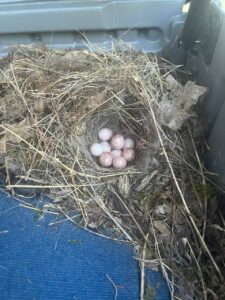
What helped:
Hold off on putting up birdhouses: Sparrows nest earlier than other common backyard birds (BTO’s LifeCycle Magazine, Spring 2018). By waiting until later in spring, I gave native birds a better shot at claiming boxes.
Use shiny deterrents: A few strips of Mylar tied near nesting boxes fluttered in the breeze and spooked the sparrows—but didn’t bother other birds.
Close off cozy corners: I found a sparrow nest tucked into a gap in my garden shed. Now, anything with a roof gets a once-over in early spring.
Pro tip: Try customizing nest boxes with hole sizes just big enough for your target species—but too small for sparrows (<28mm).
Adjust the Water Source
I hadn’t realized how much sparrows rely on water access—until I made a few changes and watched them disappear. According to study by the UC Natural Reserve System House Sparrows are overall one of the most frequent users of water fountains, both for drinking and bathing. They usually visit in big flocks that give them a domination of water sources and scare the other birds.
Install a mister or dripper: These keep water moving, which most sparrows don’t seem to care for. But robins and finches? Love it.
Add rocks to bird baths: This breaks up the surface, making it trickier for sparrows to bathe. Other birds still enjoy it just fine.
A few rocks and a gentle trickle turned my birdbath from sparrow central into a peaceful pit stop for smaller birds.
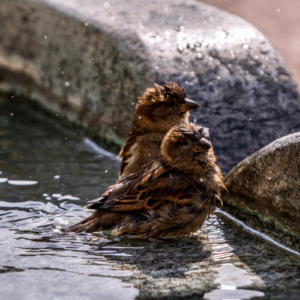
FAQs: How To Get Rid of Sparrows Questions I Get All the Time
What do sparrows like to eat the most?
They’ll eat almost anything, but especially millet, cracked corn, oats, and commercial seed blends. If you’re serious about reducing their presence, skip these altogether.
Is it really possible to get rid of sparrow deterring other birds?
Yes, absolutely. The goal isn’t to eliminate them entirely—it’s about creating a more balanced environment. When you change your feeder setup and seed choices, other species quickly fill the gap.
Why manage sparrows in the first place?
They’re invasive and aggressive. Native birds like bluebirds, tree swallows, and wrens often lose out—especially when it comes to nesting sites. Helping manage sparrows means giving native species a fighting chance.
How Do You Get Rid of Sparrows – A Balanced Bird Buffet
If sparrows have taken over your feeders, don’t feel discouraged. You don’t need to stop feeding birds—you just need to be a little more intentional about how you do it. With the right combination of seed, feeder type, placement, and habitat tweaks, you can slowly shift the balance back toward the birds you do want to see.
Sparrows may never fully disappear, but with the right setup, they’ll become just one bird in the mix—not the entire show.

